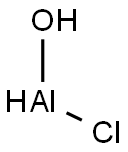A2372112
(2-Chloroethyl)trimethylammonium chloride , Plant cell culture level, ≥99%(HPLC) , 999-81-5
Synonym(s):
(2-Chloroethyl)trimethylammonium chloride;Chlormequat chloride;Chlorocholine chloride;Choline dichloride;Cycocel
CAS NO.:999-81-5
Empirical Formula: C5H13Cl2N
Molecular Weight: 158.07
MDL number: MFCD00011869
EINECS: 213-666-4
| Pack Size | Price | Stock | Quantity |
| 5G | RMB231.20 | In Stock |
|
| 25G | RMB879.20 | In Stock |
|
| others | Enquire |
Update time: 2022-07-08
PRODUCT Properties
| Melting point: | 239-243 °C (dec.)(lit.) |
| Boiling point: | 260.3°C (rough estimate) |
| Density | 1.2228 (rough estimate) |
| refractive index | 1.5500 (estimate) |
| storage temp. | Inert atmosphere,Room Temperature |
| solubility | DMSO (Slightly), Methanol (Slightly) |
| form | Crystalline Powder or Crystals |
| color | White to off-white |
| Water Solubility | almost transparency |
| Sensitive | Hygroscopic |
| Merck | 14,2104 |
| BRN | 3563994 |
| Stability: | Stable. Combustible. Incompatible with strong oxidizing agents. Corrodes many metals. Very hygroscopic. |
| CAS DataBase Reference | 999-81-5(CAS DataBase Reference) |
| EPA Substance Registry System | Chlormequat chloride (999-81-5) |
Description and Uses
Chlormequat chloride is a white to yellowishcrystalline solid with a fish-like odor. Molecularweight=158.1; Freezing/Melting point=245℃ (decomposes); Hazard Identification (based on NFPA 704 M RatingSystem): Health 3, Flammability 0, Reactivity 0. Highly soluble in water. Carrier solvents used in commercial productsmay alter physical and toxicological properties.
Plant growth regulator on ornamental plants.
Safety
| Symbol(GHS) |  GHS06 |
| Signal word | Danger |
| Hazard statements | H302-H311 |
| Precautionary statements | P264-P270-P280-P301+P312-P302+P352+P312-P361+P364 |
| Hazard Codes | Xn |
| Risk Statements | 21/22 |
| Safety Statements | 36/37 |
| RIDADR | UN 2811 6.1/PG 3 |
| WGK Germany | 2 |
| RTECS | BP5250000 |
| F | 3-10 |
| TSCA | Yes |
| HazardClass | 6.1 |
| PackingGroup | III |
| HS Code | 29239000 |
| Hazardous Substances Data | 999-81-5(Hazardous Substances Data) |
| Toxicity | LD50 in mice (mg/kg): 7 i.v., 54 orally (Hennighausen, Wiegershausen) |



